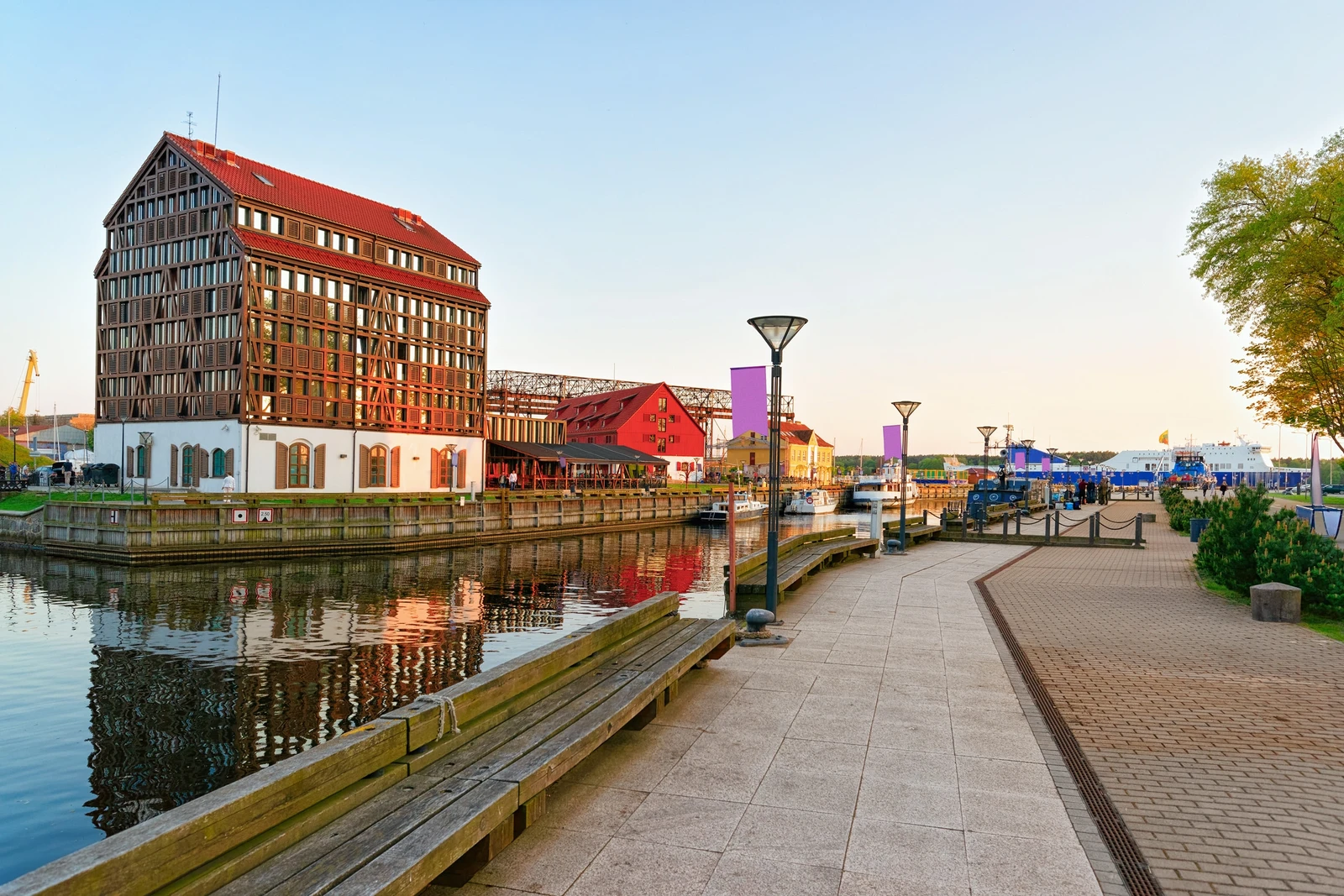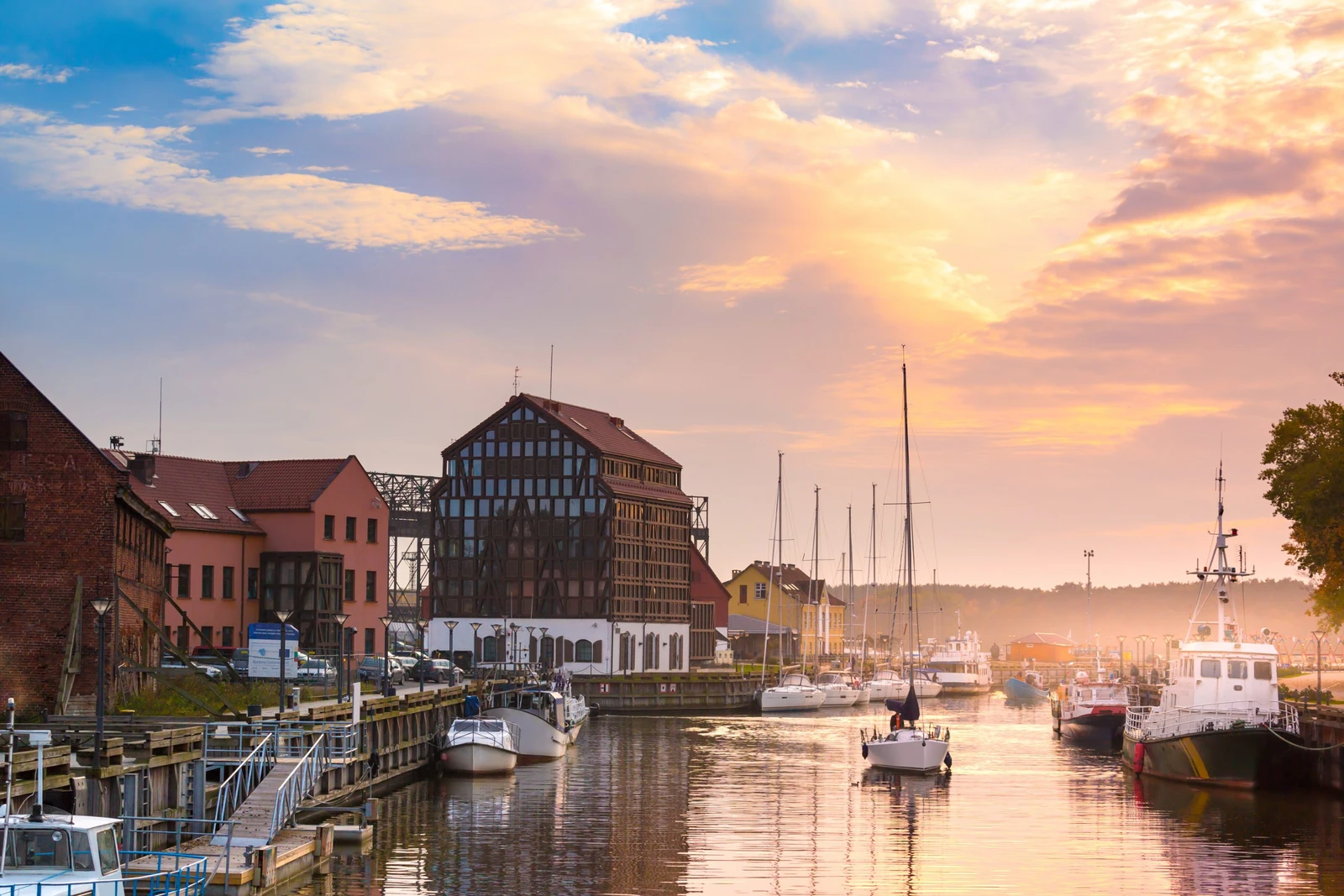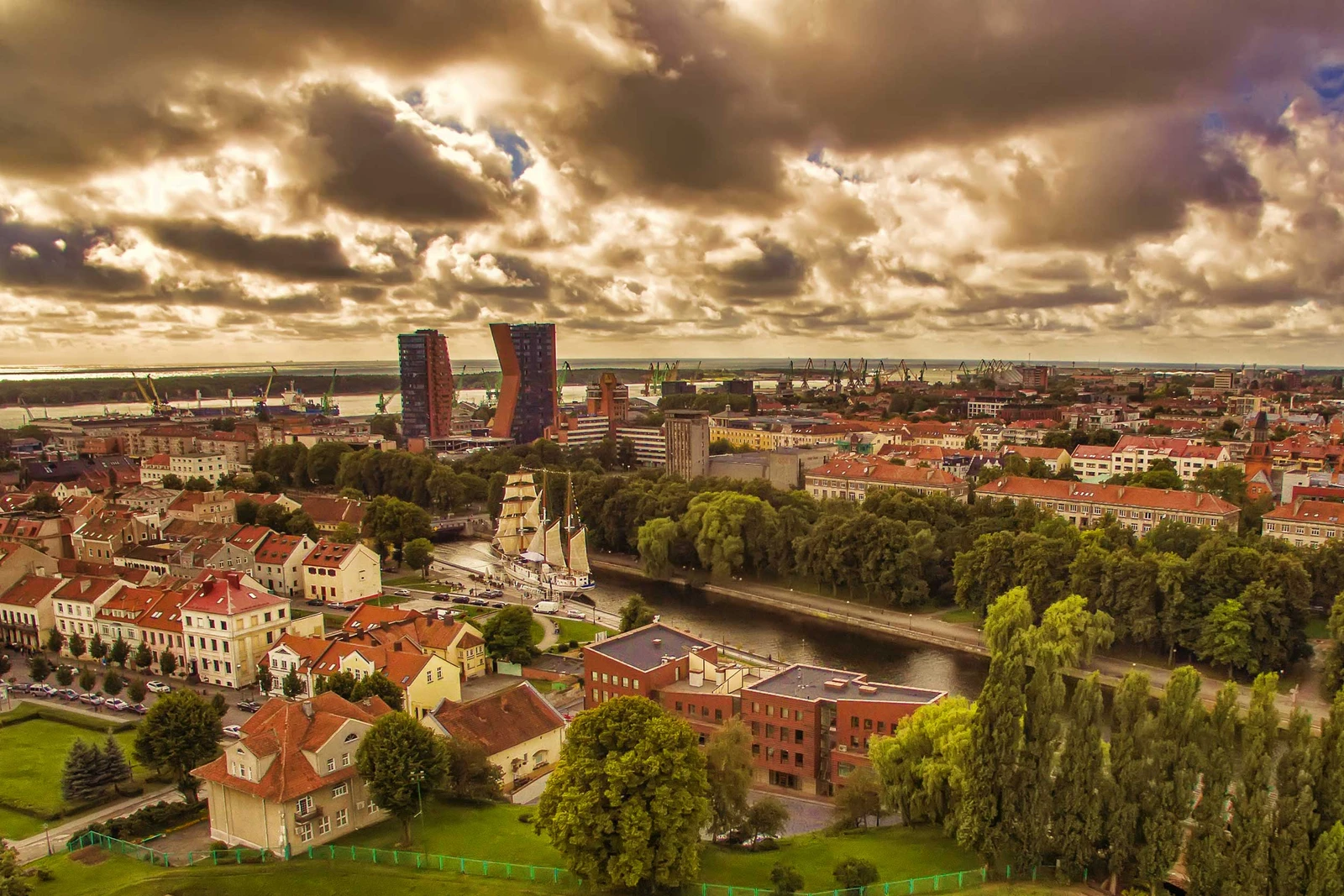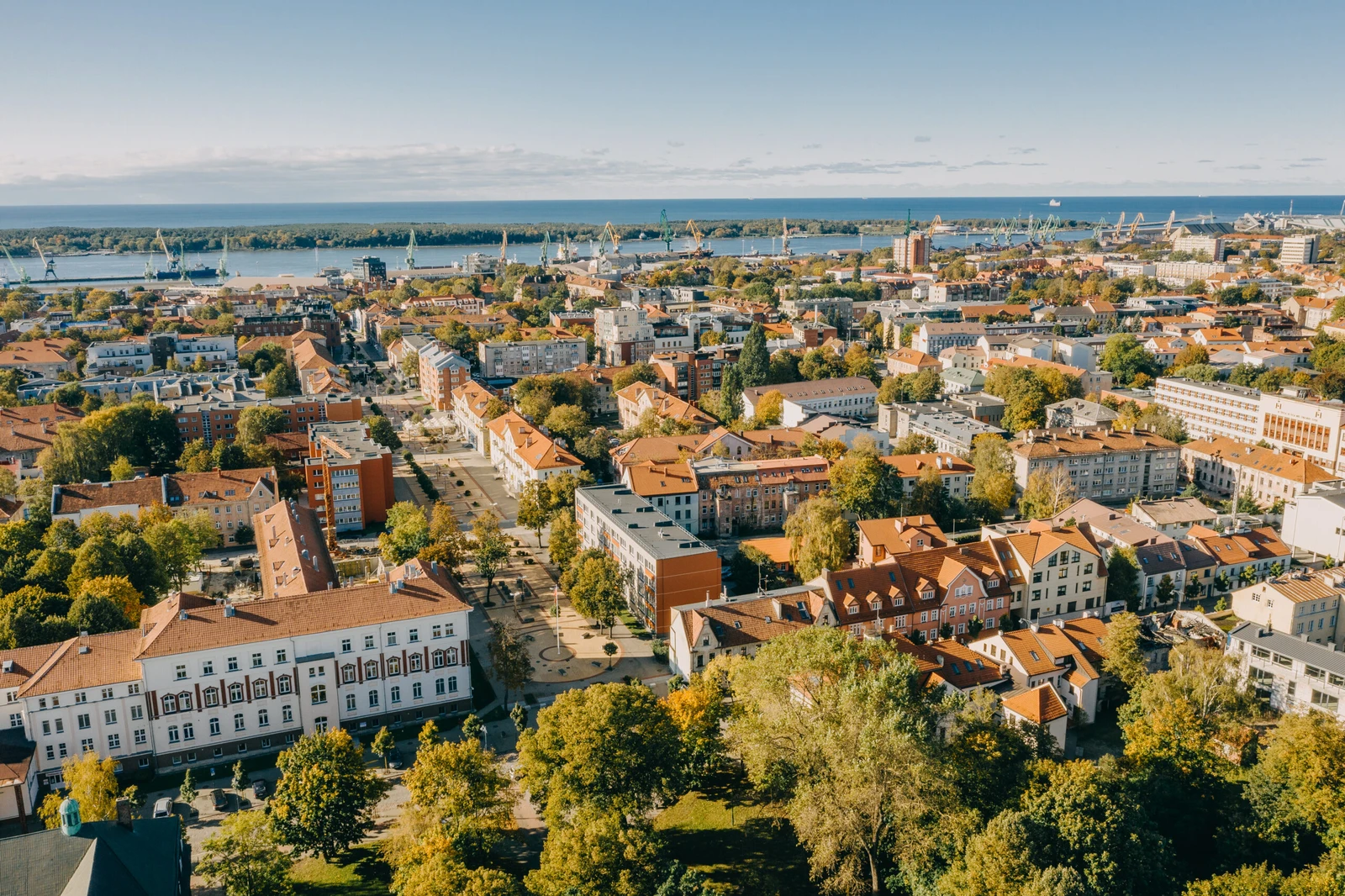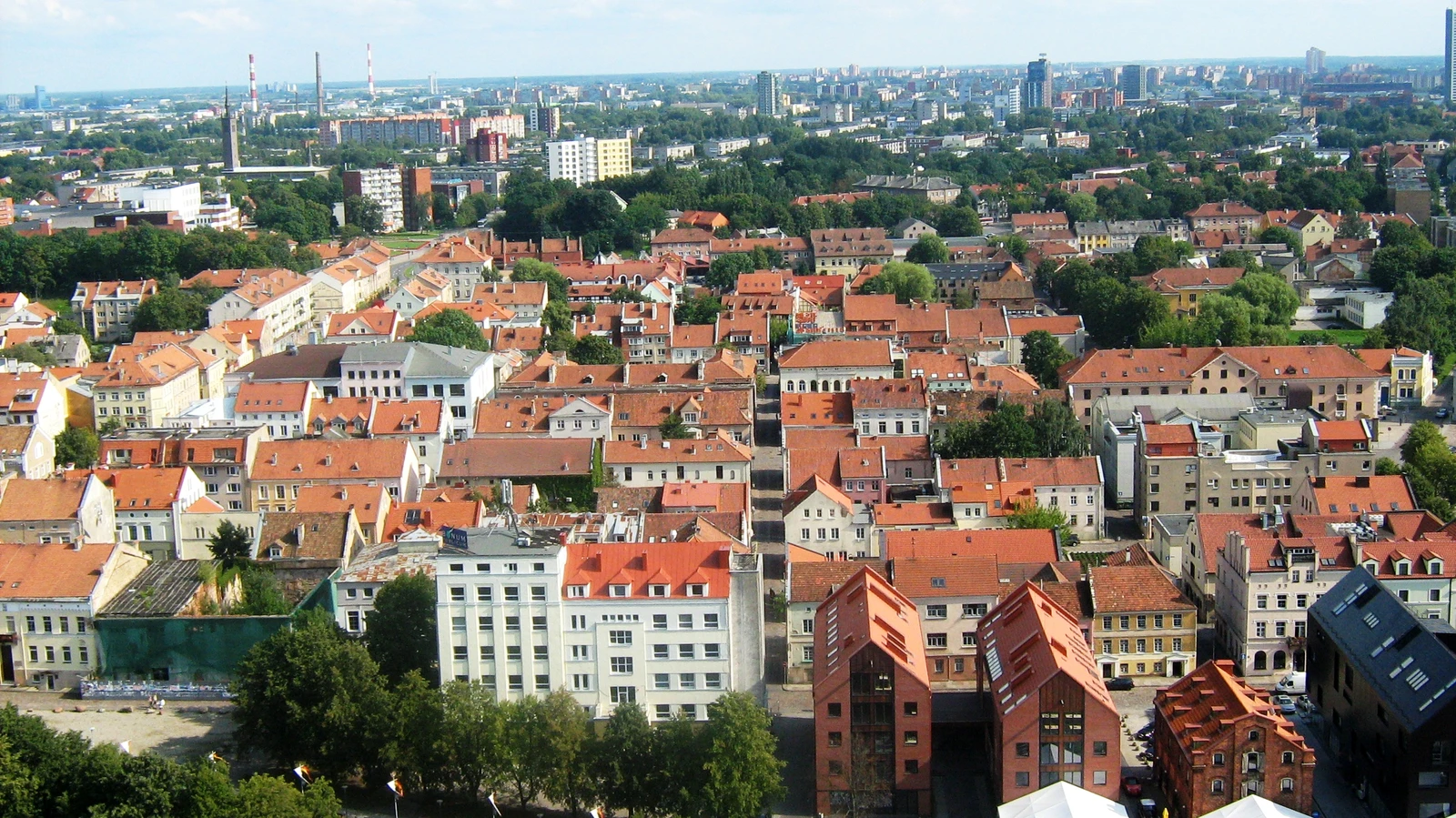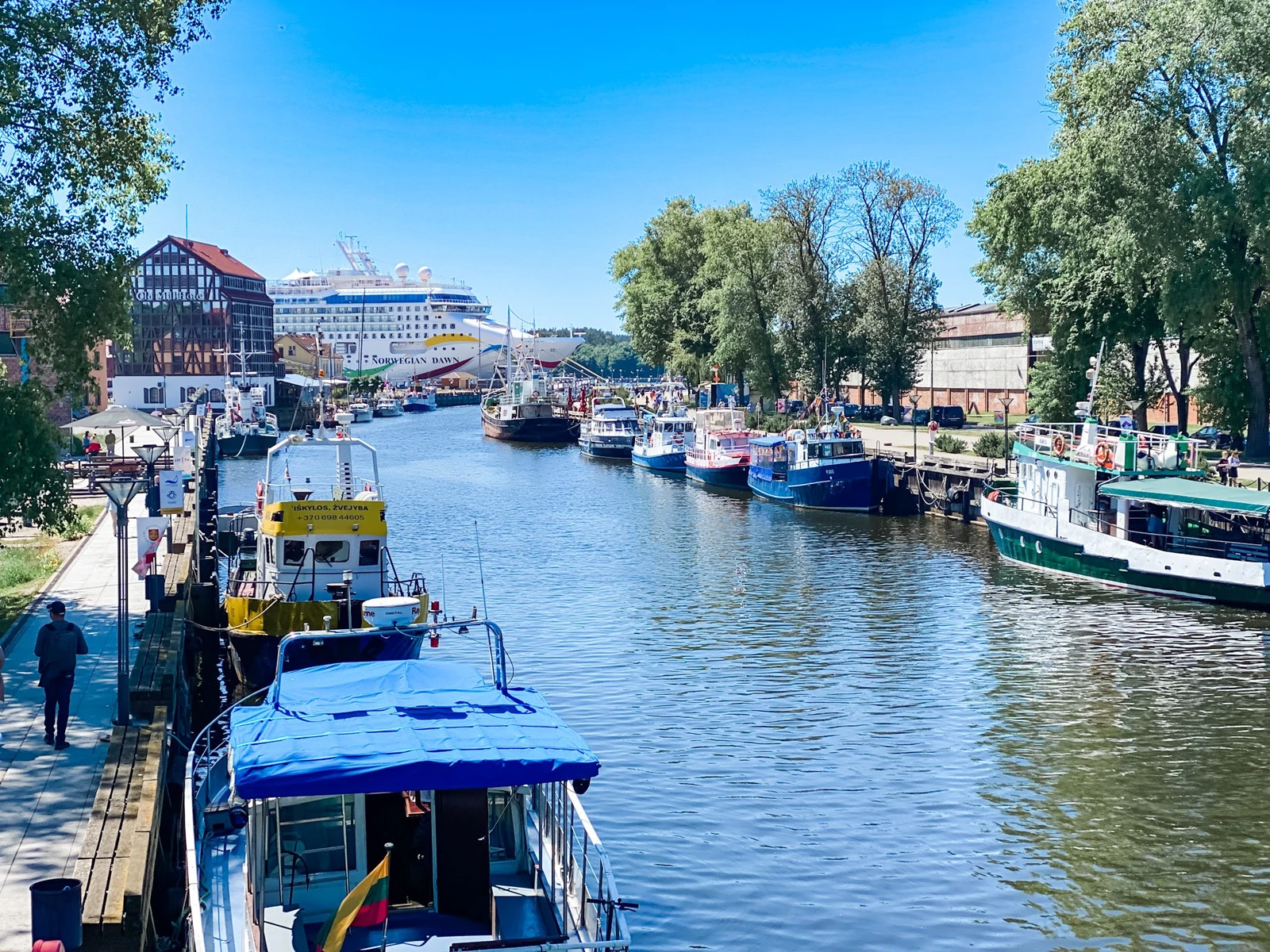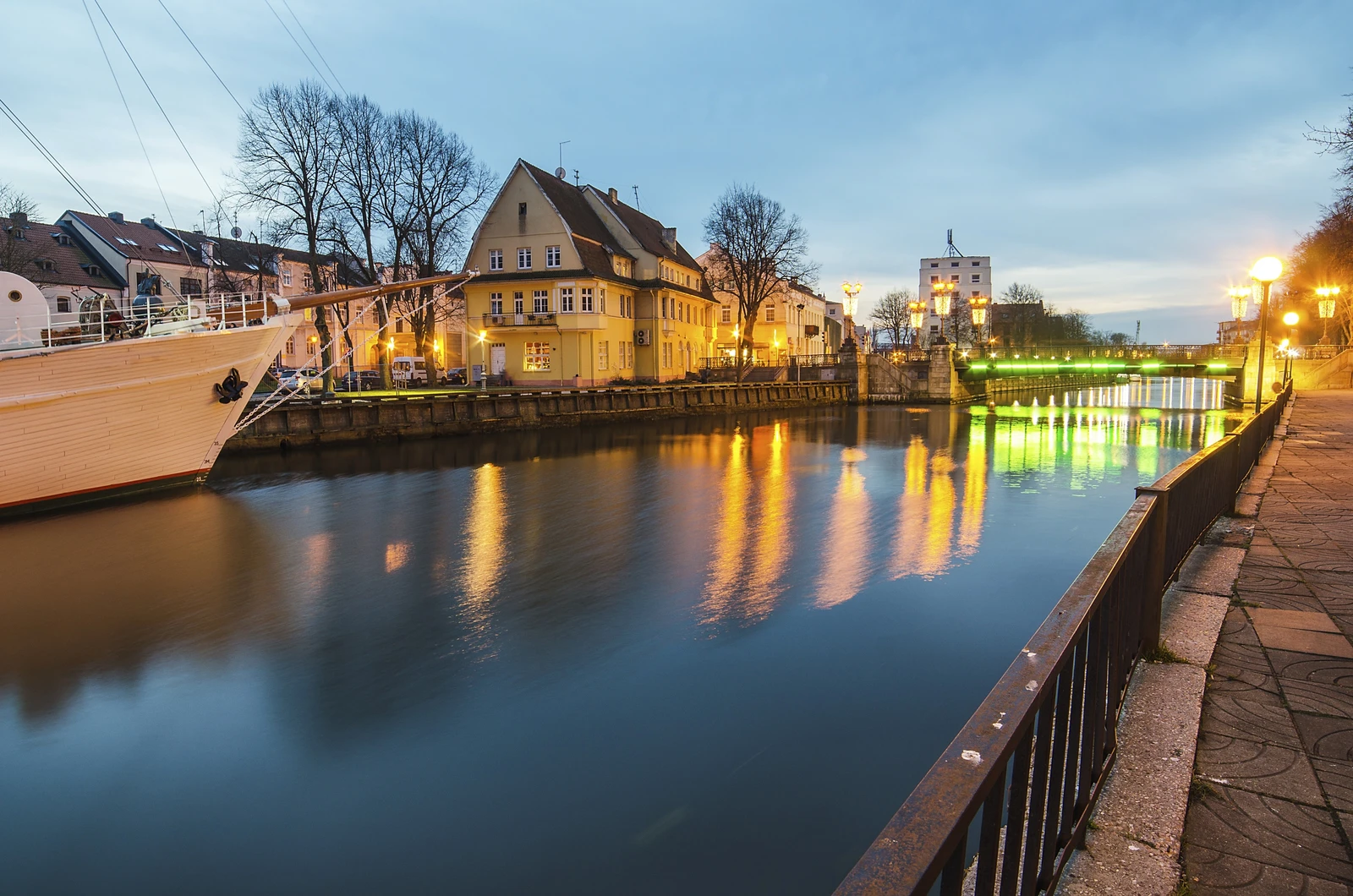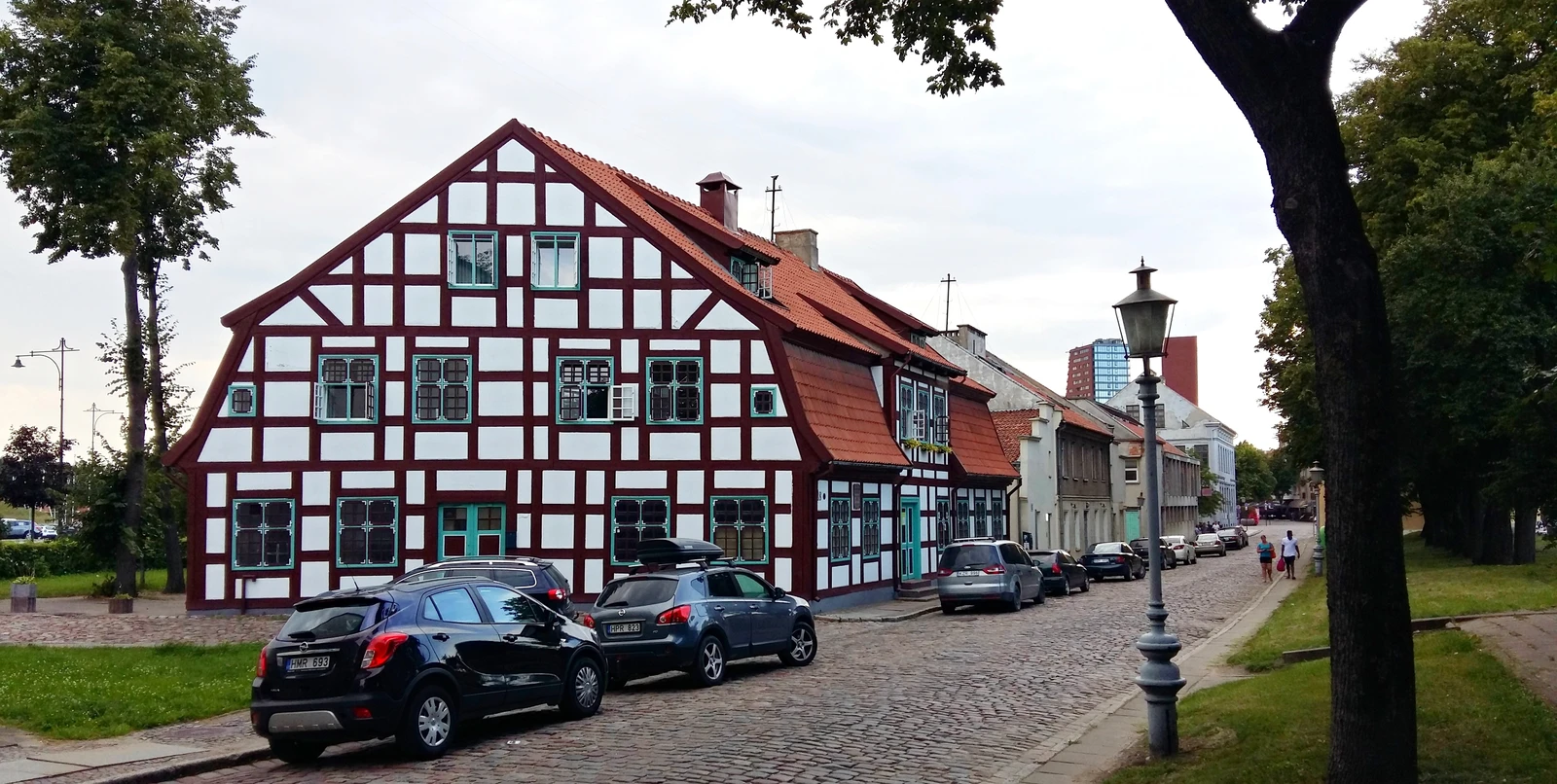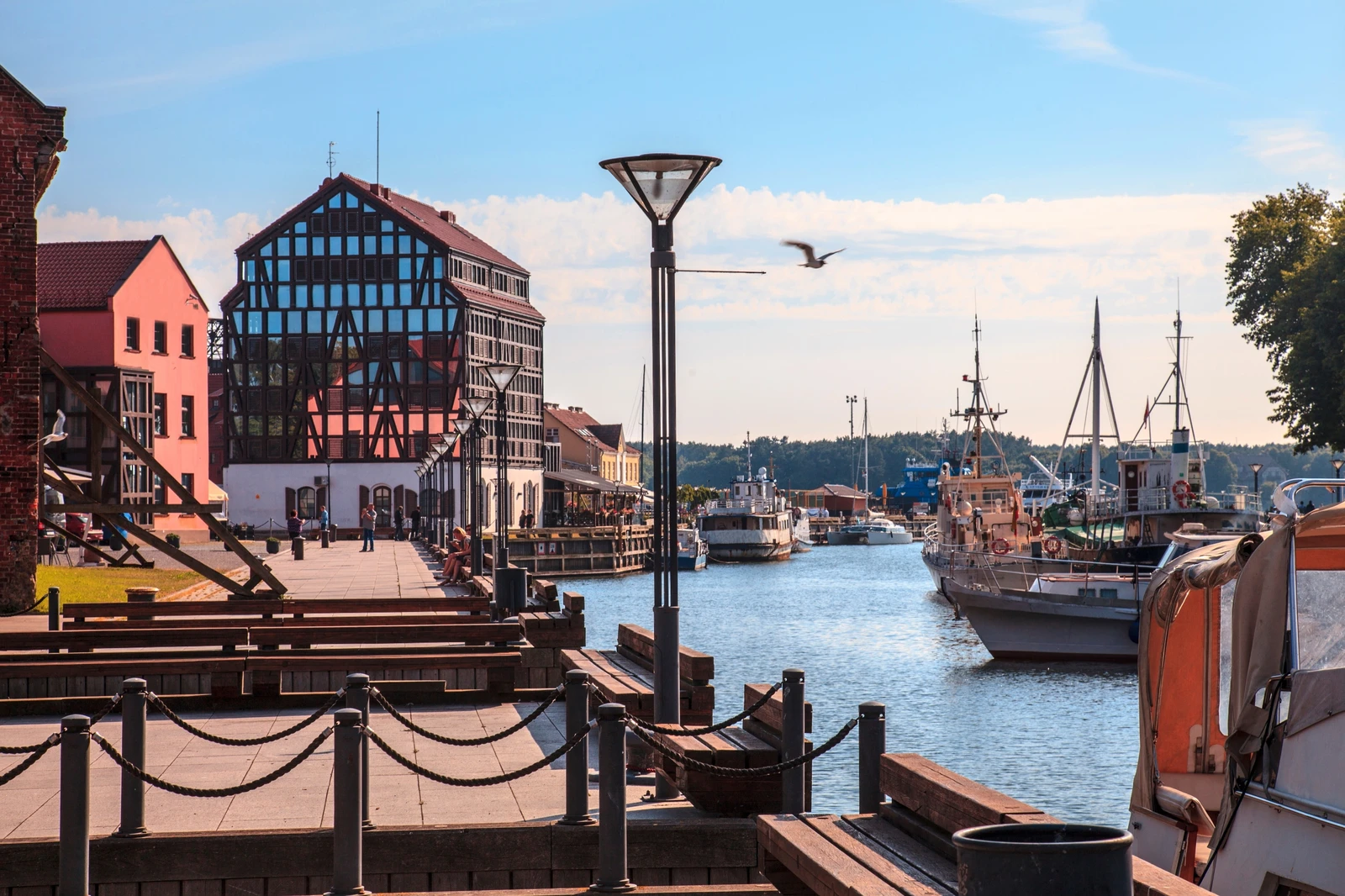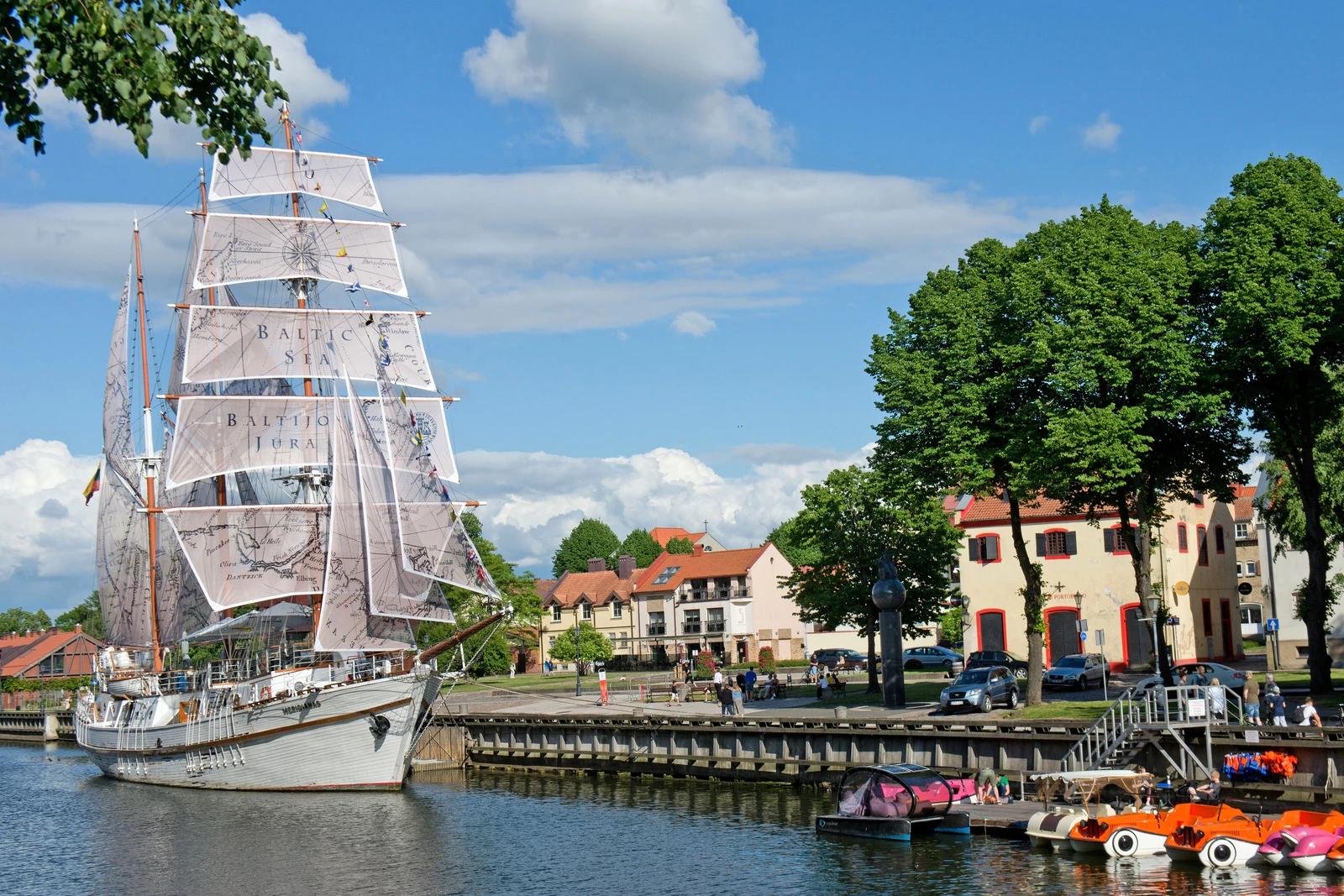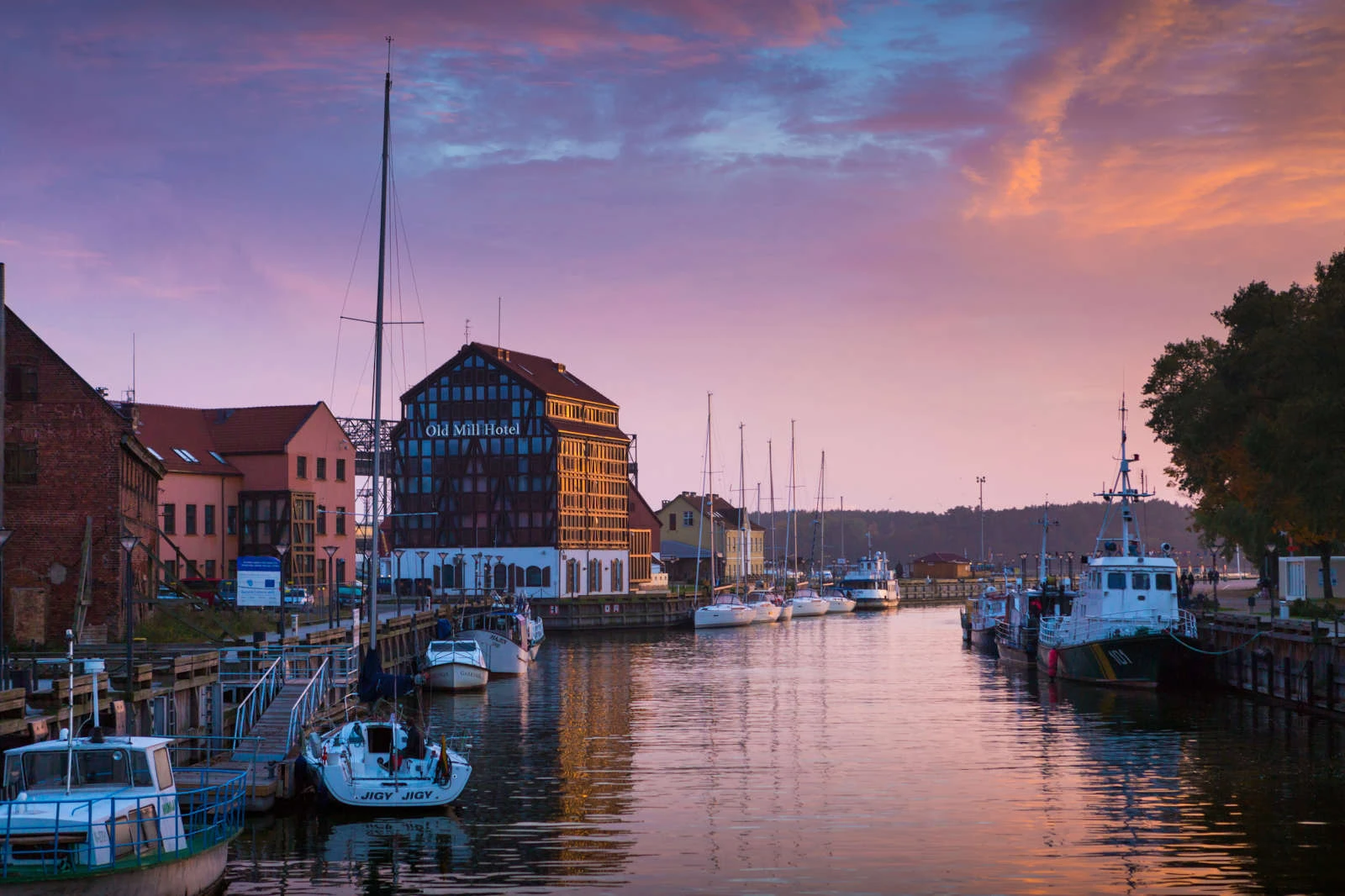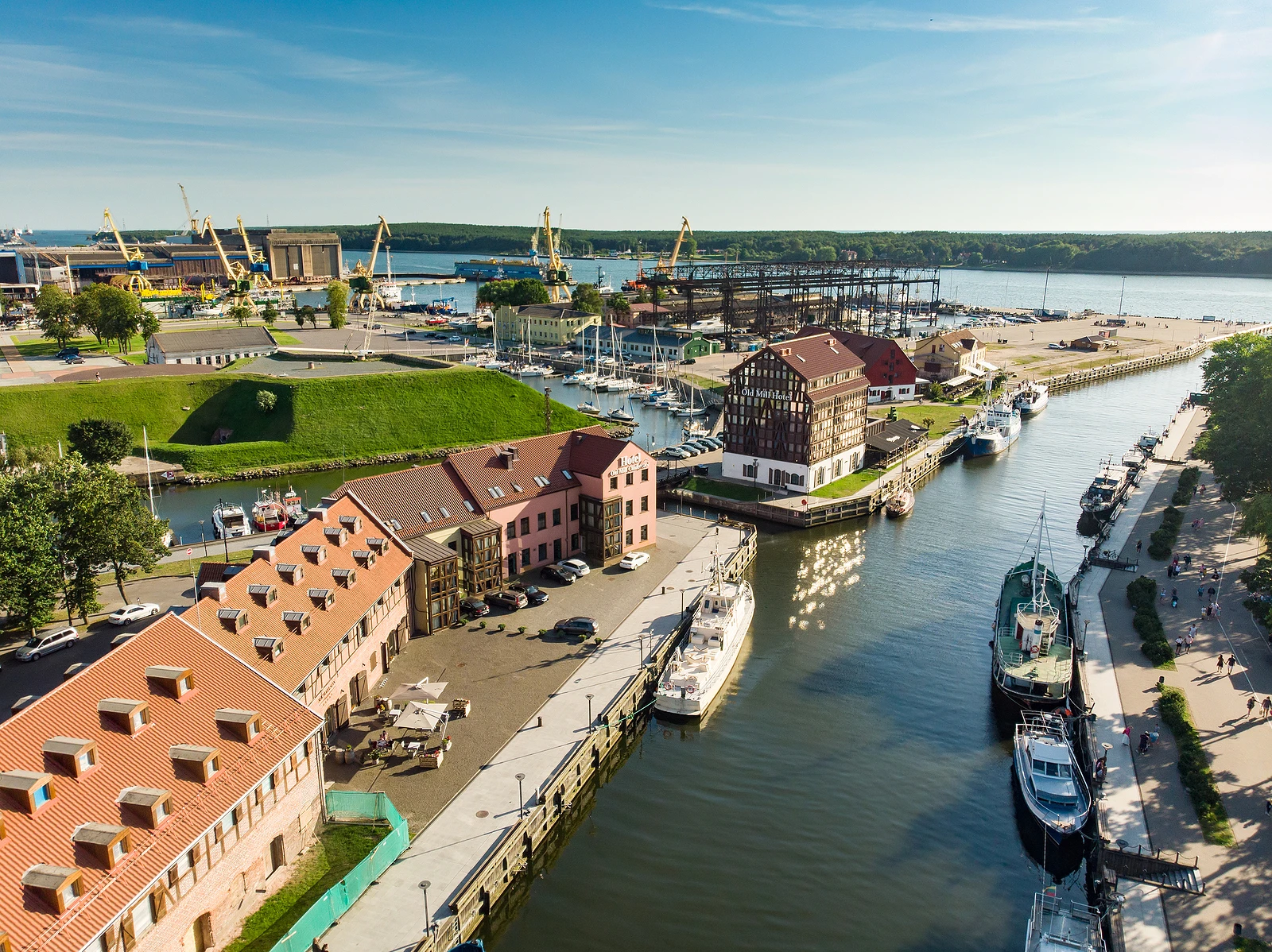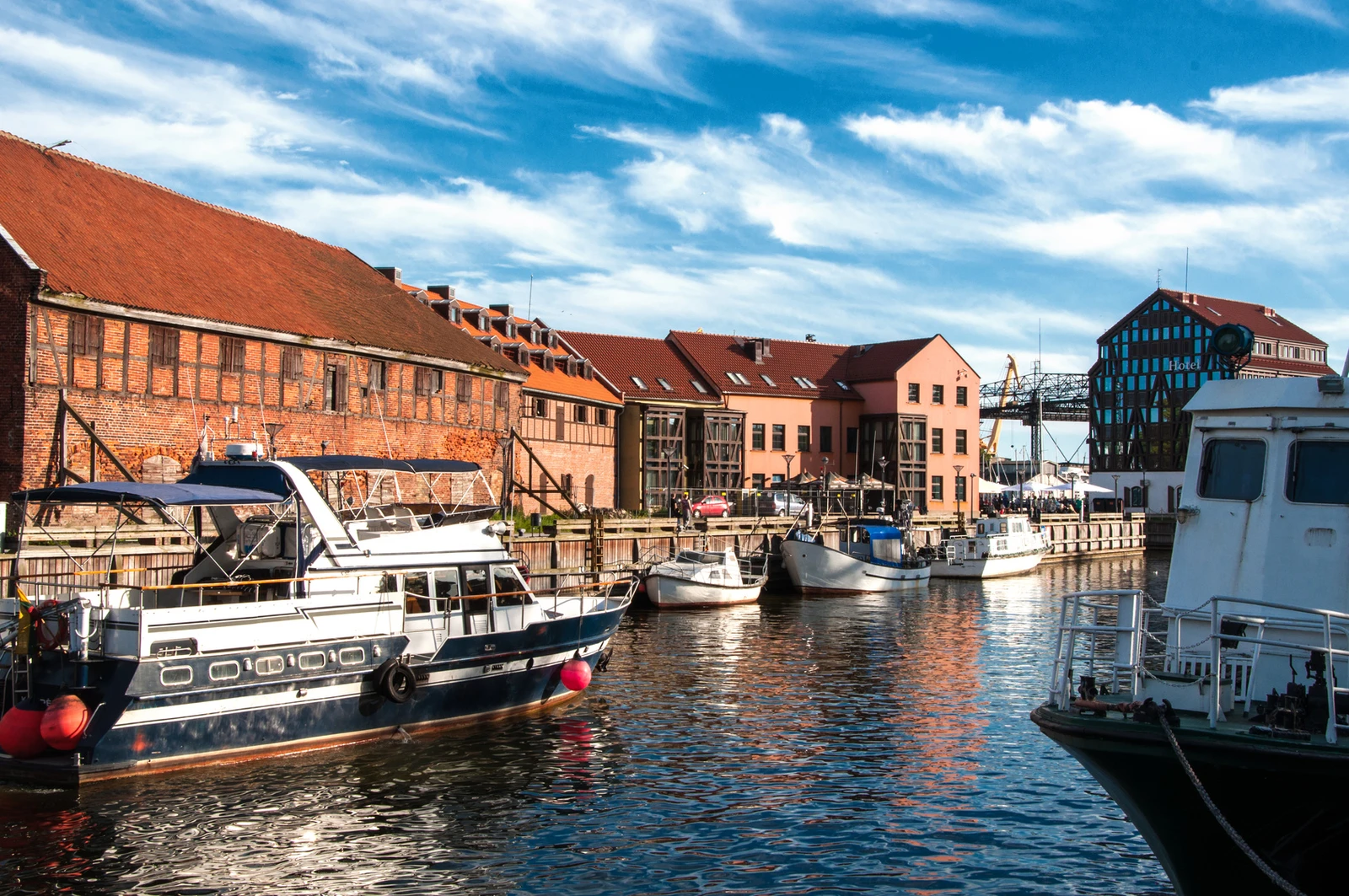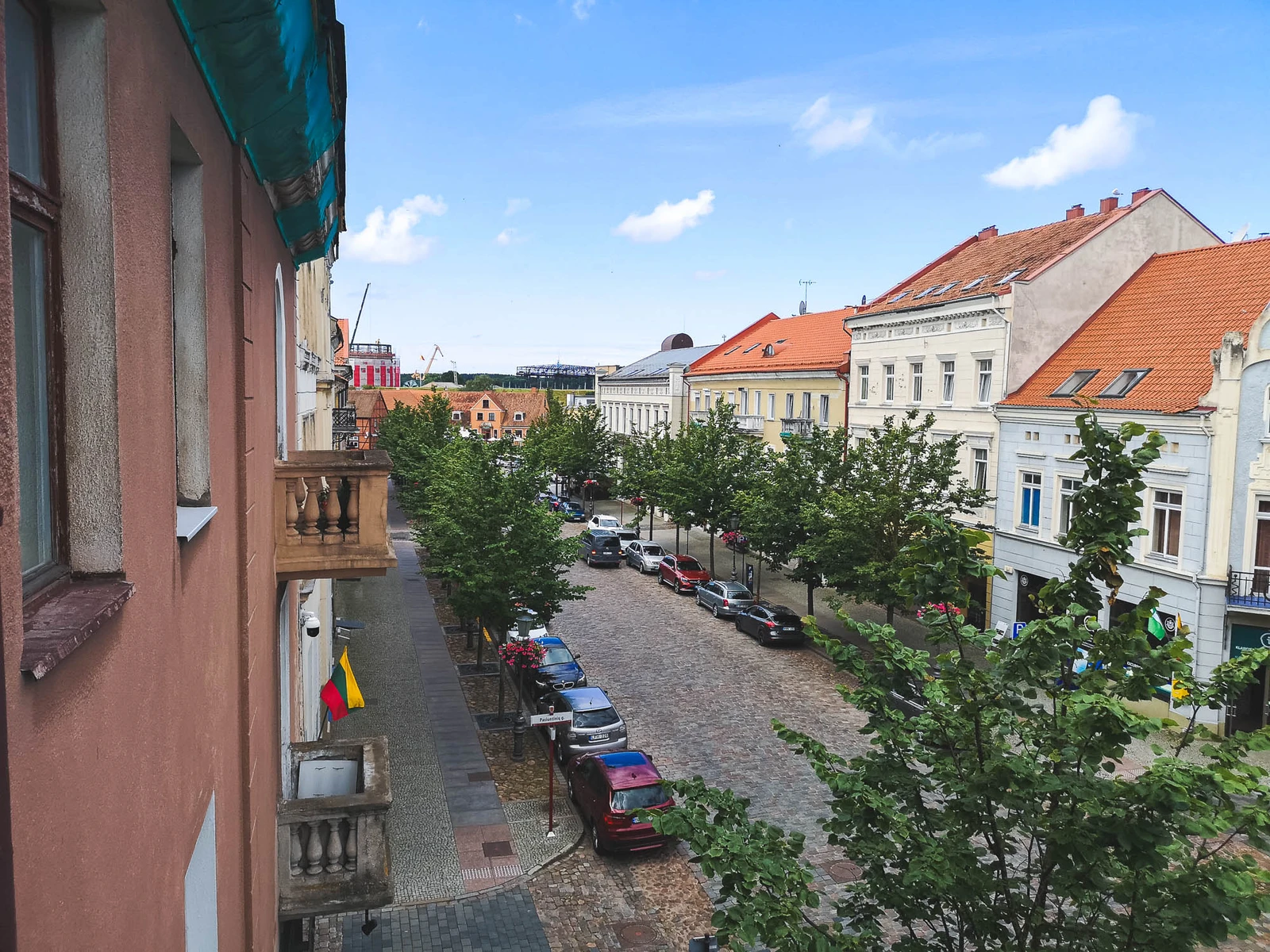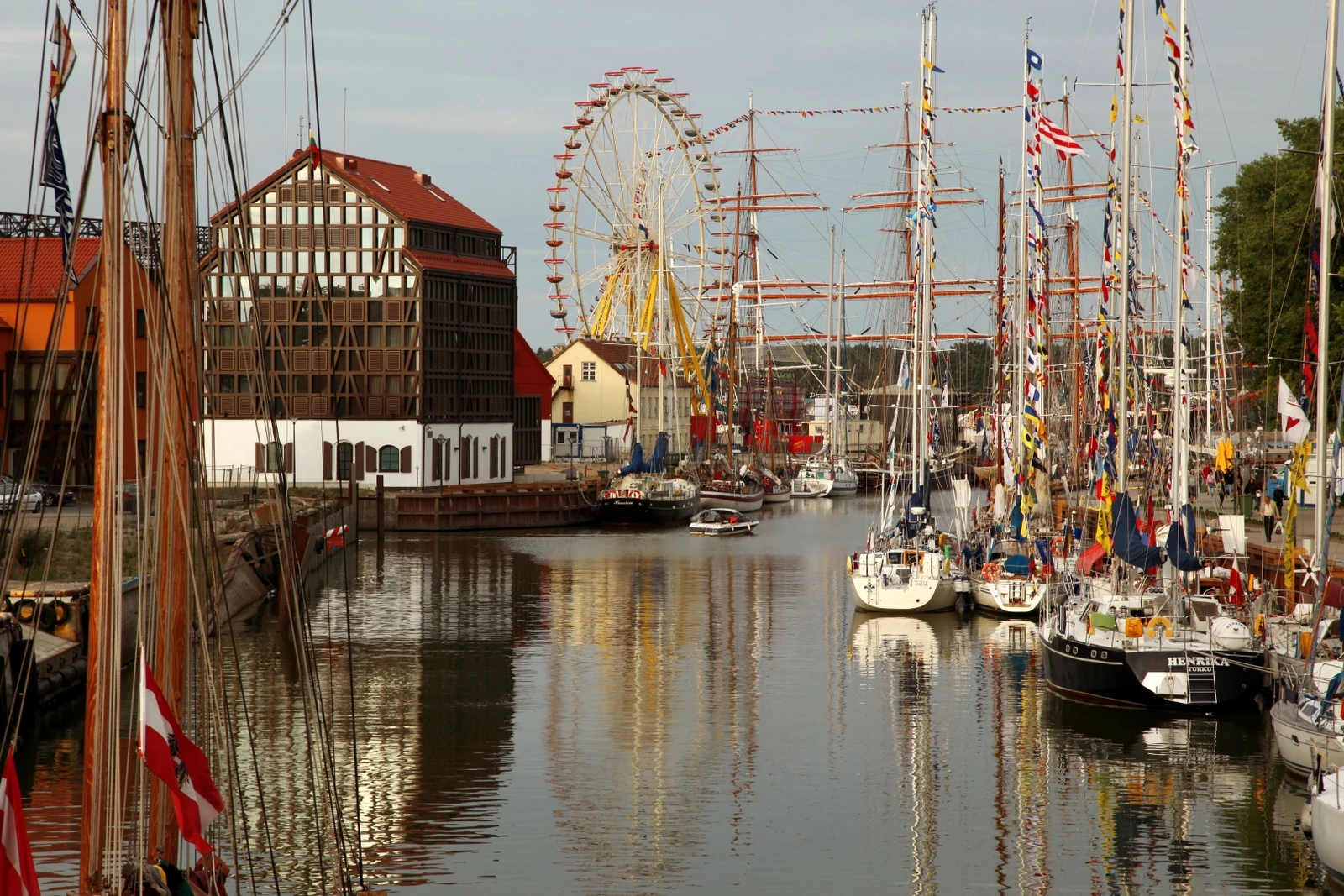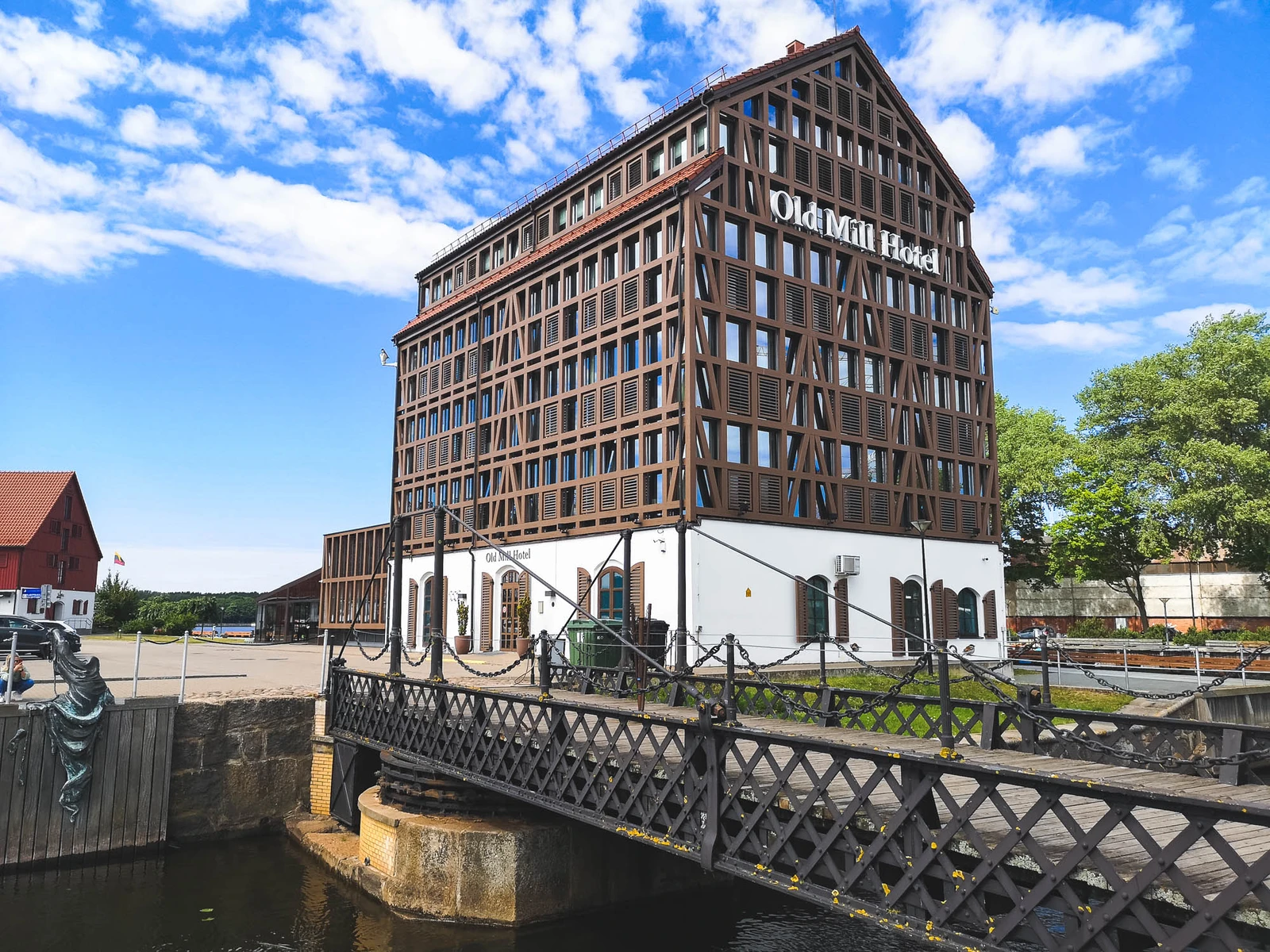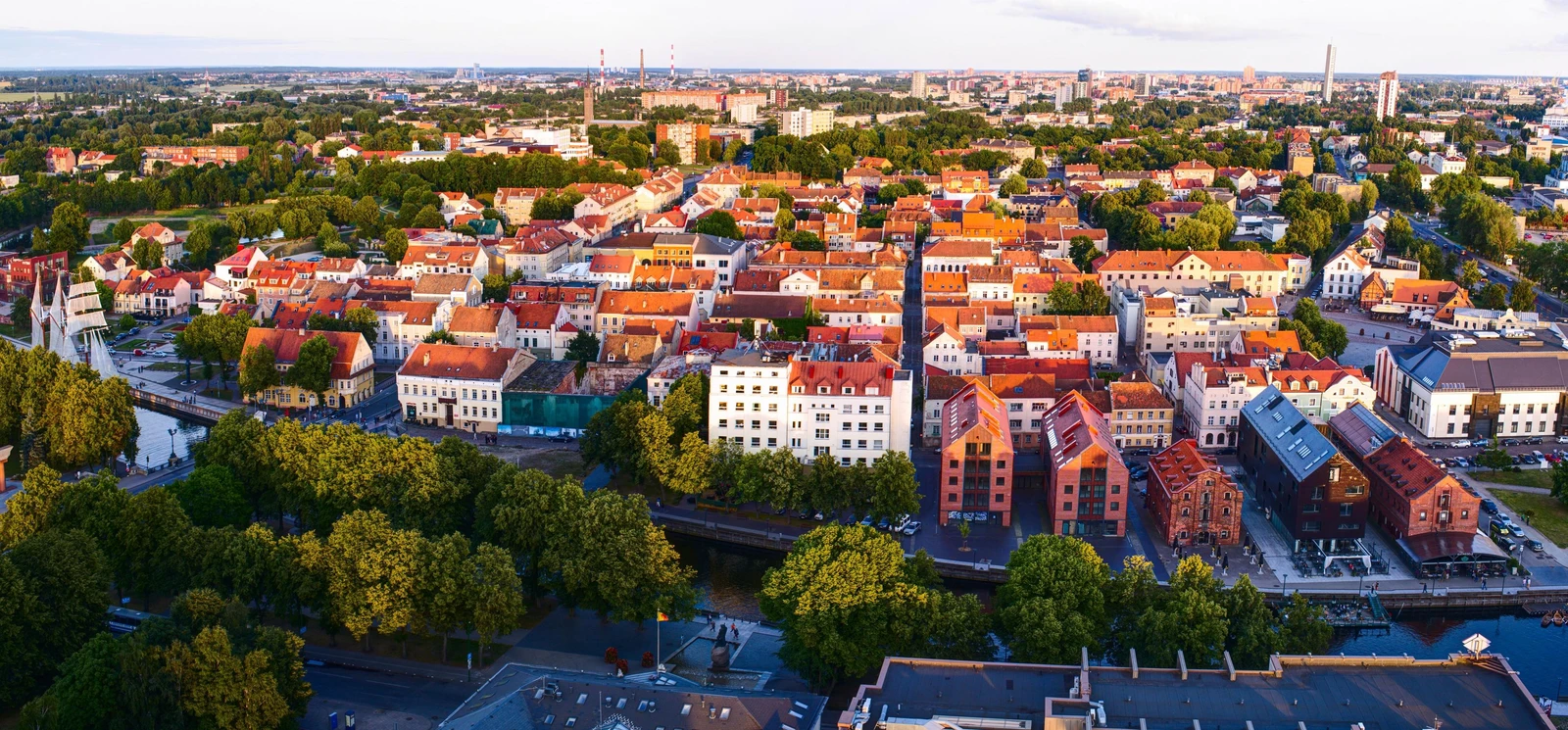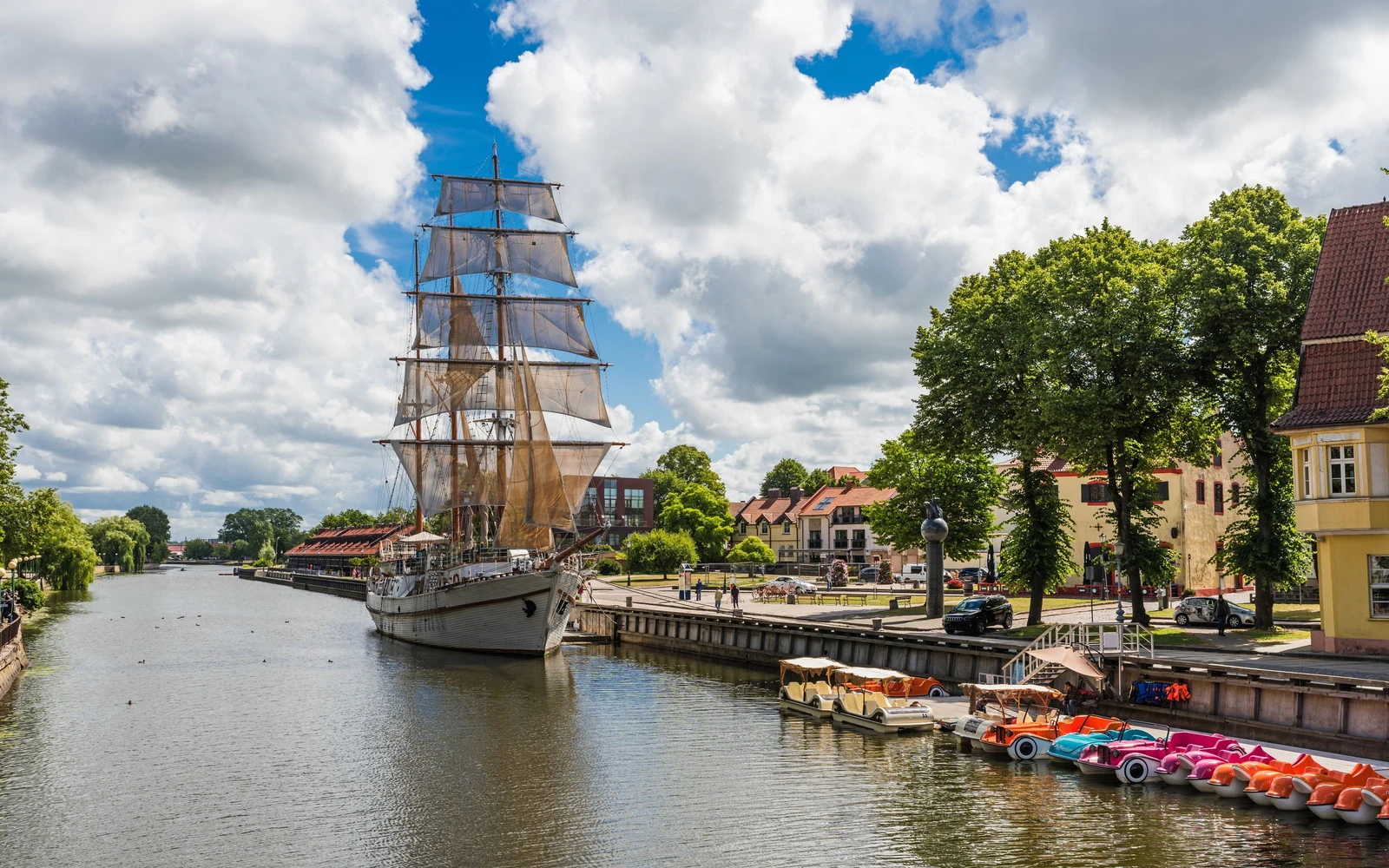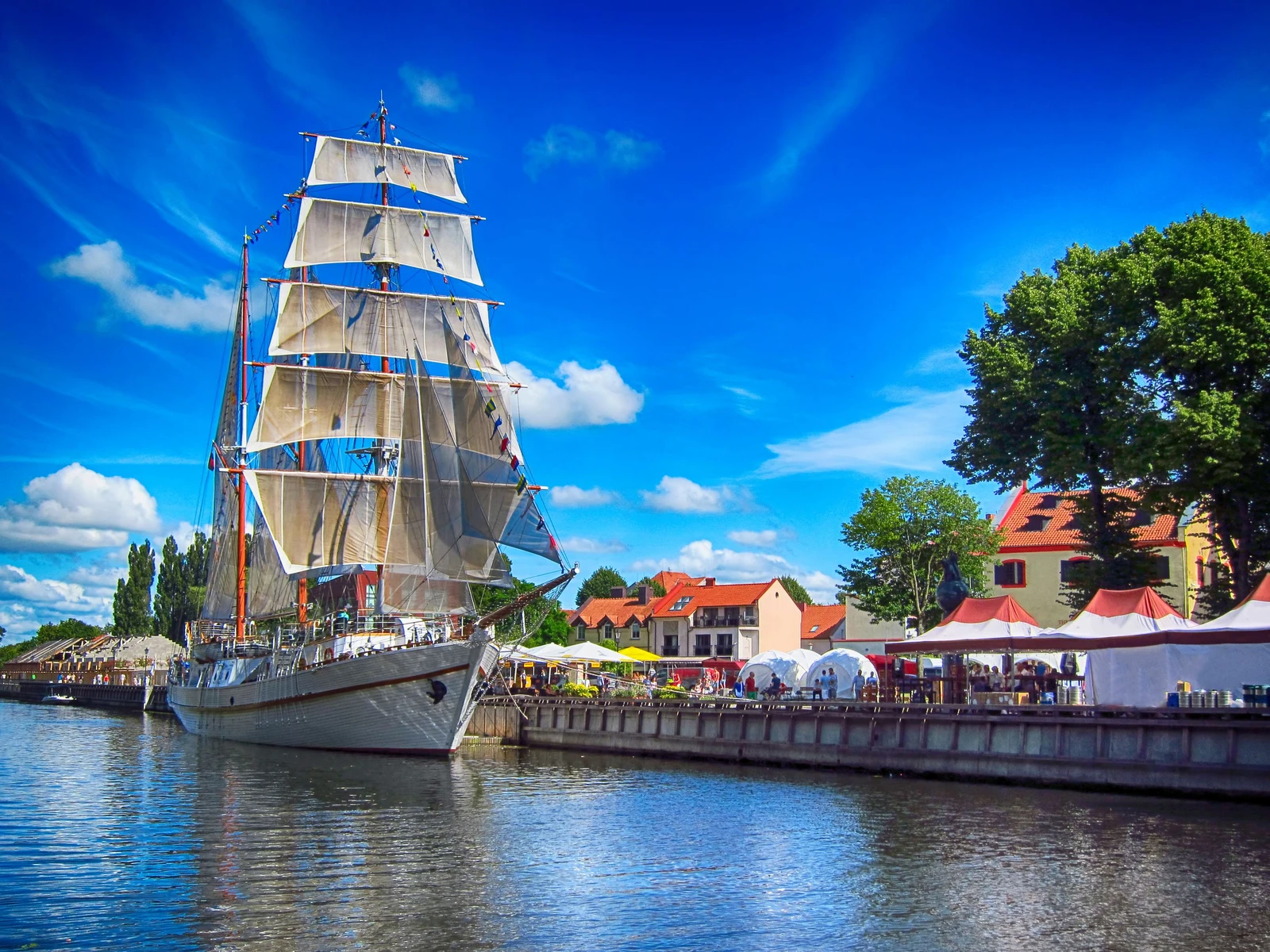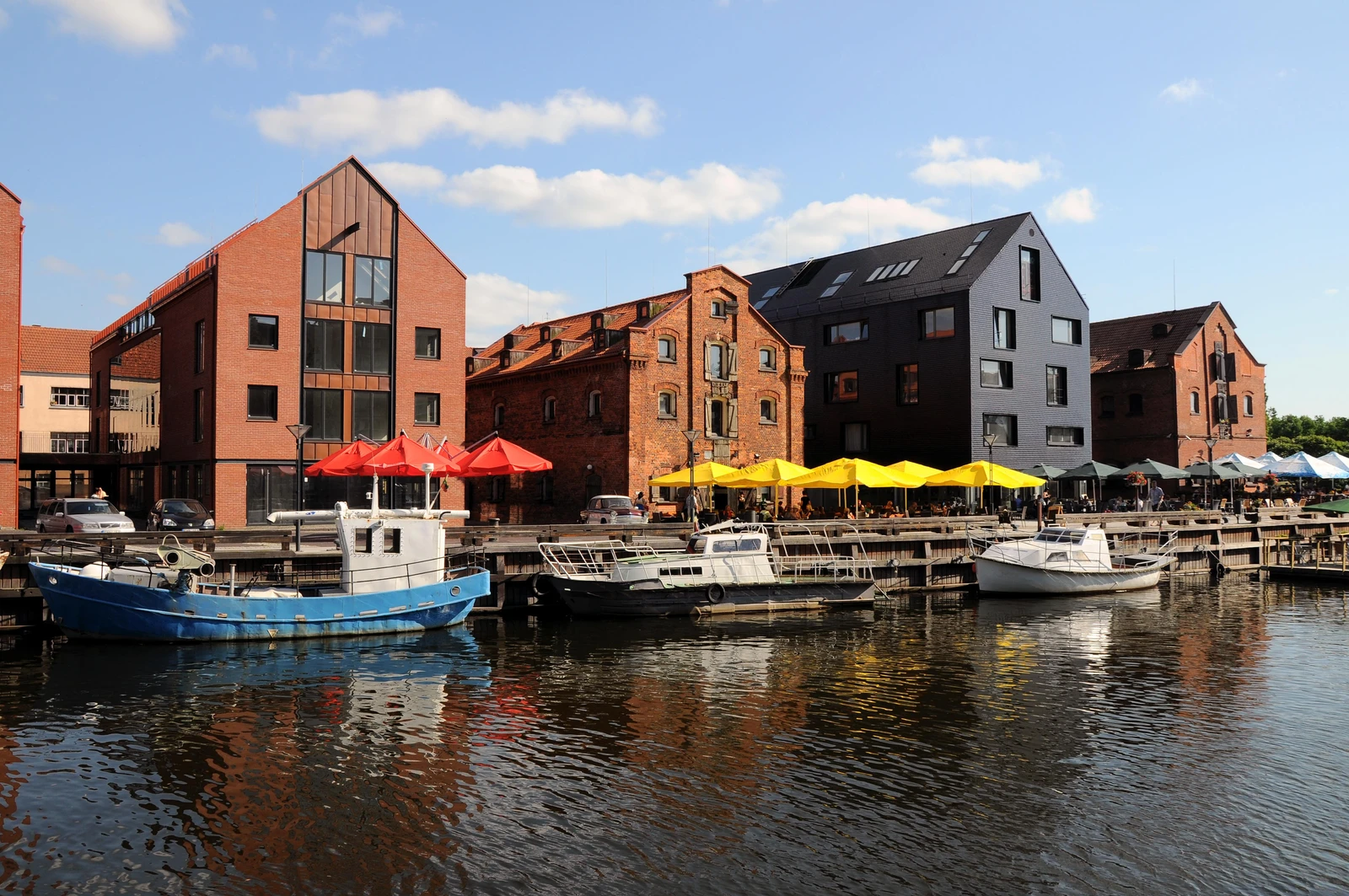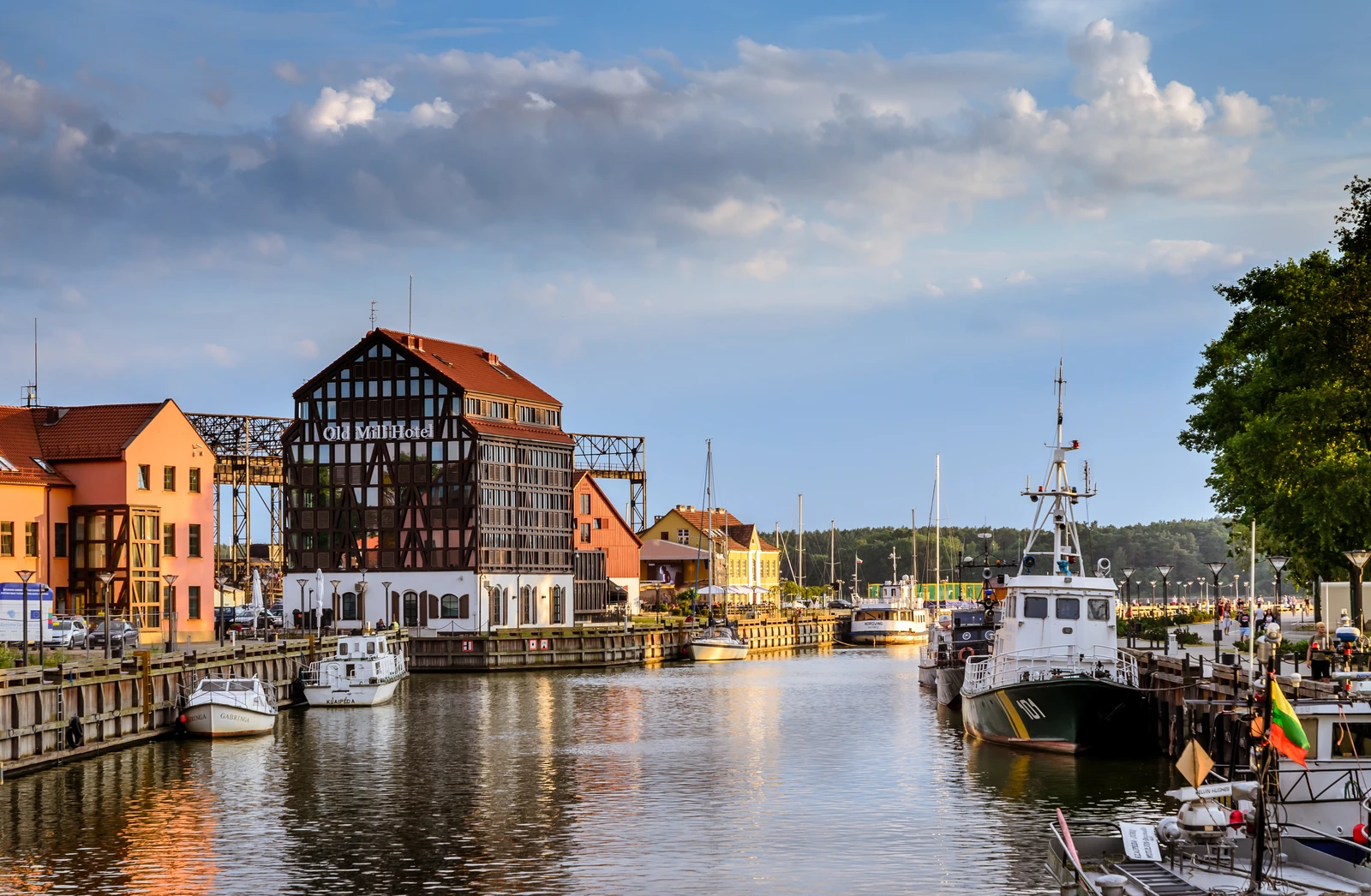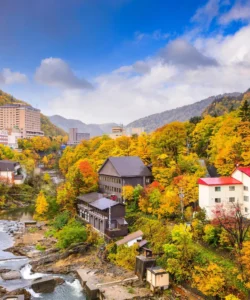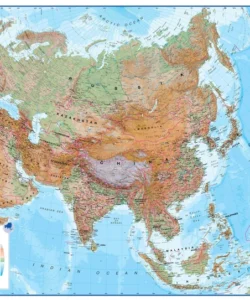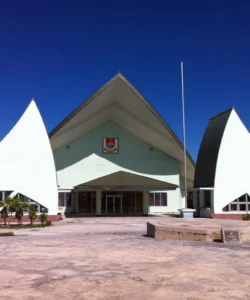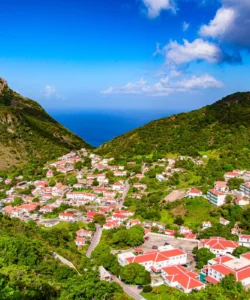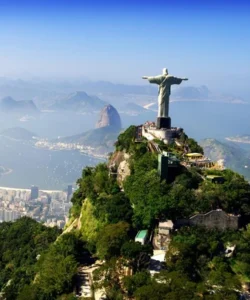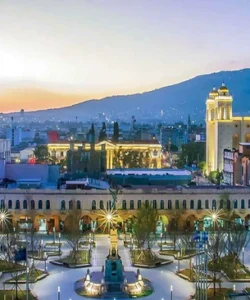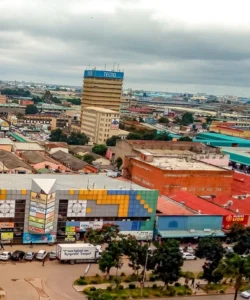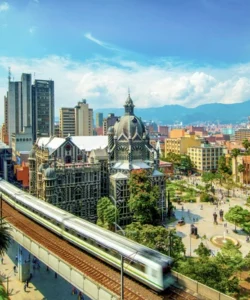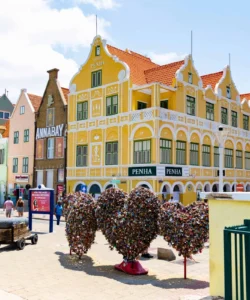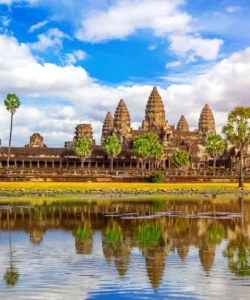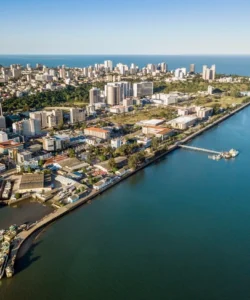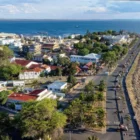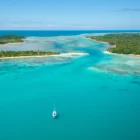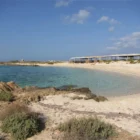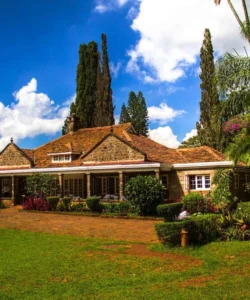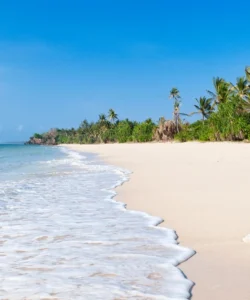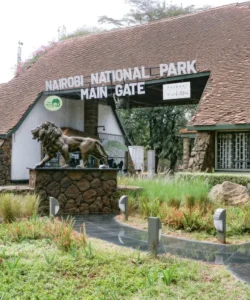Klaipėda is Lithuania’s third-largest city and its only major seaport, located at the mouth of the Curonian Lagoon where it meets the Baltic Sea. With a rich and complex history stretching back to the Teutonic Knights in the 13th century, Klaipėda has been shaped by diverse influences – German, Prussian, and Lithuanian – giving it a unique character distinct from other Lithuanian cities. Today, it’s a vibrant maritime hub known for its charming Old Town, unique half-timbered architecture, lively festivals, and as the gateway to the stunning Curonian Spit.
Listen to an introduction about Klaipeda

Name: Klaipėda (Клайпеда; formerly Memel in German)
Address: Klaipėda, Lithuania. The city center and Old Town are concentrated on the northern side of the Danė River.
How to get there:
Reaching Klaipėda, involves a significant international journey to Europe, followed by domestic travel within Lithuania:
- From Vilnius to Klaipėda:
- By Train: Take a train from Vilnius Railway Station to Klaipėda. The journey takes approximately 4-4.5 hours and offers scenic views.
- By Bus: Buses depart frequently from Vilnius Bus Station to Klaipėda. The journey takes around 4-5 hours. This is often the most convenient due to frequency.
- By Car/Taxi/Ride-hailing (e.g., Bolt/Uber): Driving from Vilnius to Klaipėda takes about 3-4 hours (approx. 300 km west of Vilnius).
- From Palanga International Airport (PLQ) to Klaipėda: Palanga Airport, a smaller international airport, is very close to Klaipėda (approx. 30 minutes drive). Buses and taxis connect PLQ to Klaipėda.
- Within Klaipėda: The Old Town and central areas are compact and best explored on foot. Public transport (buses, minibuses) is available for longer distances.
Best Time to Visit:
Klaipėda is charming year-round, but the best time for comfortable exploration and vibrant atmosphere is generally:
- Summer (June to August): Warmest weather, ideal for exploring the Old Town, enjoying outdoor cafes, boat trips, and visiting the nearby beaches and Curonian Spit. This is peak tourist season, with many outdoor events.
- Late Spring (May) and Early Autumn (September): Pleasant temperatures, fewer crowds, and often beautiful light for photography.
Winter (November to April) can be very cold and snowy, offering a quiet, stark, and sometimes picturesque atmosphere, but with many outdoor activities curtailed.
Landscape and Architecture:
Klaipėda’s “architecture” is a unique fusion of German and Lithuanian influences, characterized by half-timbered buildings, maritime themes, and its strategic location at the mouth of a lagoon:
- Old Town (Senamiestis): The most distinctive part of the city, located on the northern bank of the Danė River. It’s famous for:
- Half-timbered Architecture (Fachwerk): A unique feature in Lithuania, reflecting its German/Prussian heritage. Many buildings feature exposed wooden beams with infill, reminiscent of Northern German and Scandinavian port towns. This gives it a charming, almost fairytale-like quality.
- Narrow Streets and Courtyards: The Old Town’s winding streets and hidden courtyards invite exploration.
- Theatre Square (Teatro aikštė): The heart of the Old Town, a lively public space. It’s home to the Agnė of Tharau fountain and statue, a popular landmark. The square is used for festivals and outdoor performances.
- Klaipėda Castle Site: While the original Teutonic Knights’ castle is largely in ruins, its remnants, including a reconstructed bastion and a museum (Klaipėda Castle Museum), offer historical insight.
- Danė River: The river flows through the city, separating the Old Town from some newer areas. The riverfront is often lined with boats and restaurants.
- Maritime Theme: The city’s identity is inextricably linked to its port and the sea. This is reflected in:
- Meridianas: A historic three-masted sailing ship, now a restaurant, permanently moored on the Danė River, serving as a prominent landmark.
- Sculptures: Numerous sculptures related to maritime themes (e.g., “The Black Ghost” sculpture by the river, the “Taravos Anikė” or “Agnė of Tharau” in Theatre Square, the “Magic Mouse” sculpture in Old Town) add to the city’s unique charm and provide quirky photo opportunities.
- Port and Curonian Lagoon: Klaipėda sits at the narrow strait connecting the Curonian Lagoon to the Baltic Sea. The port itself is a busy, working port, with ferries to the Curonian Spit.
- New Town: Beyond the Old Town, Klaipėda has a more modern urban fabric, reflecting its post-WWII development.
- Beaches: The city is close to beautiful Baltic Sea beaches (e.g., Smiltynė, accessible by ferry; Palanga, a popular resort town north of Klaipėda).
What makes it famous:
Klaipėda is famous for:
- Lithuania’s Only Major Seaport: Its crucial role as Lithuania’s main gateway to the sea and its economic significance as a port city.
- Unique German/Prussian Heritage: Its distinct history, having been part of Prussia and Germany (as Memel) for centuries, gives it a unique cultural and architectural identity within Lithuania, contrasting with the more Polish and Lithuanian influences of Vilnius and Kaunas.
- Charming Half-Timbered Old Town: The prevalence of half-timbered (Fachwerk) buildings in its Old Town is a rare and distinctive architectural style in the Baltics.
- Gateway to the Curonian Spit: It serves as the essential ferry link to the UNESCO World Heritage site of the Curonian Spit, making it the primary access point for this extraordinary natural wonder.
- Maritime Atmosphere: The city exudes a strong maritime atmosphere, evident in its port, historical ships, and nautical-themed sculptures.
- Lively Festivals: Host to various annual events, most notably the Sea Festival (Jūros šventė) in summer, a major maritime celebration.
- Sculptures and Quirky Art: The city is known for its numerous charming and sometimes whimsical sculptures found throughout the Old Town, adding to its character.
Differences from some other wonders:
Klaipėda distinguishes itself from other Lithuanian cities and Baltic Sea ports in several key ways:
- Germanic Architectural Dominance (Fachwerk): Unlike Vilnius (Baroque) or Kaunas (Modernist), Klaipėda’s Old Town is defined by its half-timbered (Fachwerk) architecture, which is a direct legacy of its long history as a German city (Memel). This architectural style is unique in Lithuania and sets it apart from other Baltic capitals that might have more Swedish, Russian, or Polish influences.
- Only Major Seaport: Its absolute importance as Lithuania’s sole major ice-free seaport gives it a distinct economic and strategic role that is fundamental to the nation, unlike inland cities.
- Coastal Culture and Maritime Identity: Klaipėda has a more pronounced maritime and coastal culture compared to the more inland-focused cultures of Vilnius or Kaunas. Its identity is tied to the sea, shipping, and port activities.
- Access Point to Unique Natural Wonder: Its function as the direct gateway (via ferry) to the Curonian Spit is a major differentiator. The city is intrinsically linked to one of Europe’s most unique natural and cultural landscapes.
- Resilience and Rebirth (Post-WWII): Having been heavily damaged during WWII and then rebuilt under Soviet rule, the city (especially its Old Town) has experienced a significant rebirth and rediscovery of its unique pre-war heritage, showcasing resilience and a blending of historical layers.
In essence, Klaipėda is a unique and resilient wonder, a vibrant port city that masterfully blends its distinct German and Prussian heritage with its Lithuanian identity, offering a charming maritime atmosphere and serving as the essential gateway to the natural marvel of the Curonian Spit.
